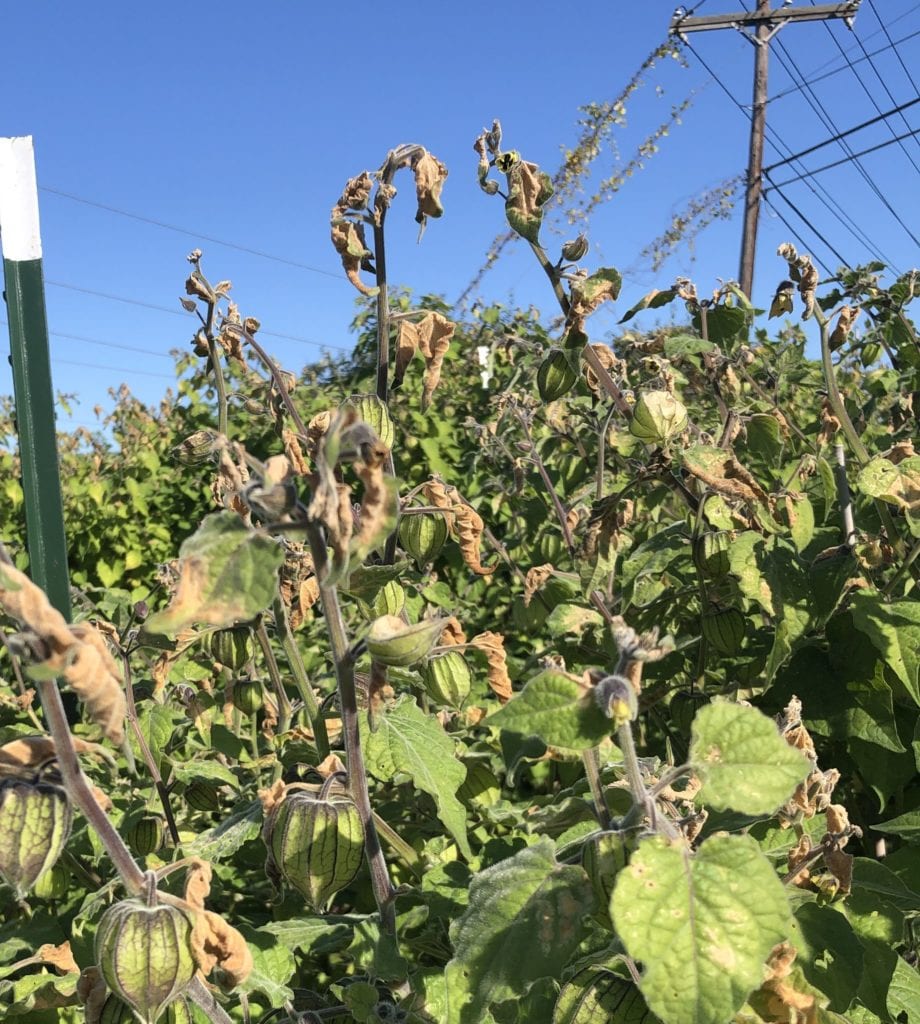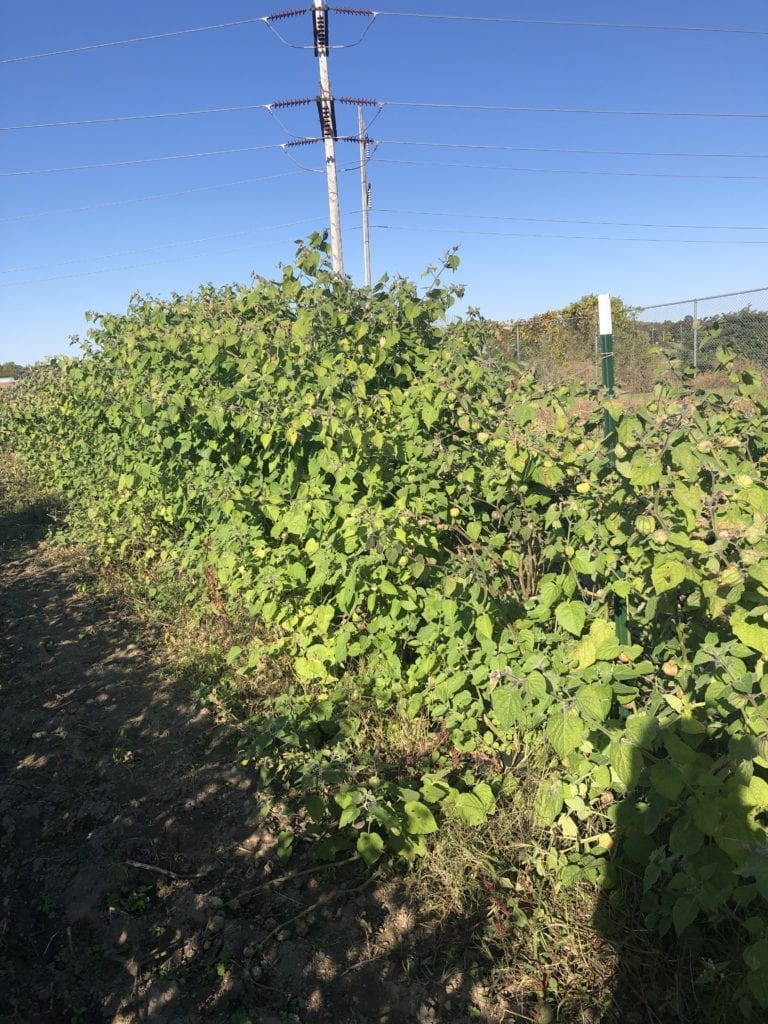With winter in full swing in Ithaca, it has come time to wrap up our first Physalis field season. Being that it was our first time growing groundcherry and goldenberry outside in a field setting, we didn’t know what to expect. One thing we were interested in was the length of the growing season for both species.
We found that the groundcherries (Physalis pruinosa) began to produce ripe fruit in early July and started to slow down by the end of August. The plants started producing fewer flowers and the leaves began to yellow by mid-August. The fruit that was produced at the end of August was much smaller compared to the fruit produced at the beginning of the season in July. By mid-September the plants had all stopped flowering and the vegetation became brown and brittle.
For goldenberry (Physalis peruviana) we had our first ripe fruit at the end of June. It is important to note that these plants were started in March in the greenhouse and were mature when they were transplanted into the field. We found that the goldenberry plants kept on producing fruit and flowering well into the fall, however, we were unsure how they would hold up in the cooler temperatures.
On October 5th we had our first frost, with the temperatures at our field site dipping below freezing for a couple of hours in the morning. We found that the plants had frost damage (see picture below), but were still alive. Another interesting thing we noticed was that the plants from Colombia (“Goldenberry”) were able to withstand the cooler temperatures and continued to flower and produce fruit well into October, after the first frost. Comparatively, the plants from South Africa and India had flowering shut down after the freezing temperatures, and displayed less vigorous growth than Goldenberry, becoming brittle and yellow.
We did our last goldenberry fruit harvest on October 15th, before the consistent cold weather set in for the season.

Frost damage on a South Africa goldenberry plant

Goldenberry from Colombia on October 15th, 2019. Still flowering.
